Abstract
Foraging involves the expenditure of both time and effort in the acquisition of food; animals typically modify their meal patterns so as to reduce these expenditures or costs. The contribution of time, as compared with effort, to the overall cost perceived by an animal is not known. We investigated the effect of foraging time as a cost independent of effort by measuring the meal patterns of rats living in a laboratory foraging simulation in which they earned all their daily intake. They pressed a bar once to initiate an interval (procurement interval) leading to the presentation of a large cup of food from which they could eat a meal of any size. As the length of the interval increased from 1 s to 46 hr, meal frequency decreased regularly. Meal size increased in a compensatory fashion, and total daily intake was conserved through an interval of 23 hr. The changes in meal frequency occurred because of changes in the rat's latency to bar press after each meal. The functions relating meal frequency and size to the procurement interval were of the same shape as those seen when cost is the completion of a bar-press requirement, which entails the expenditure of both effort and time. When the bar-press requirement was increased to 10, meal frequency was reduced, but time and effort did not appear to simply add together in the rat's perception of cost. These data reveal that time is preceived to be a cost by rats foraging in this laboratory environment. These results suggest that the time parameters of foraging are different from those of consumption.
Full text
PDF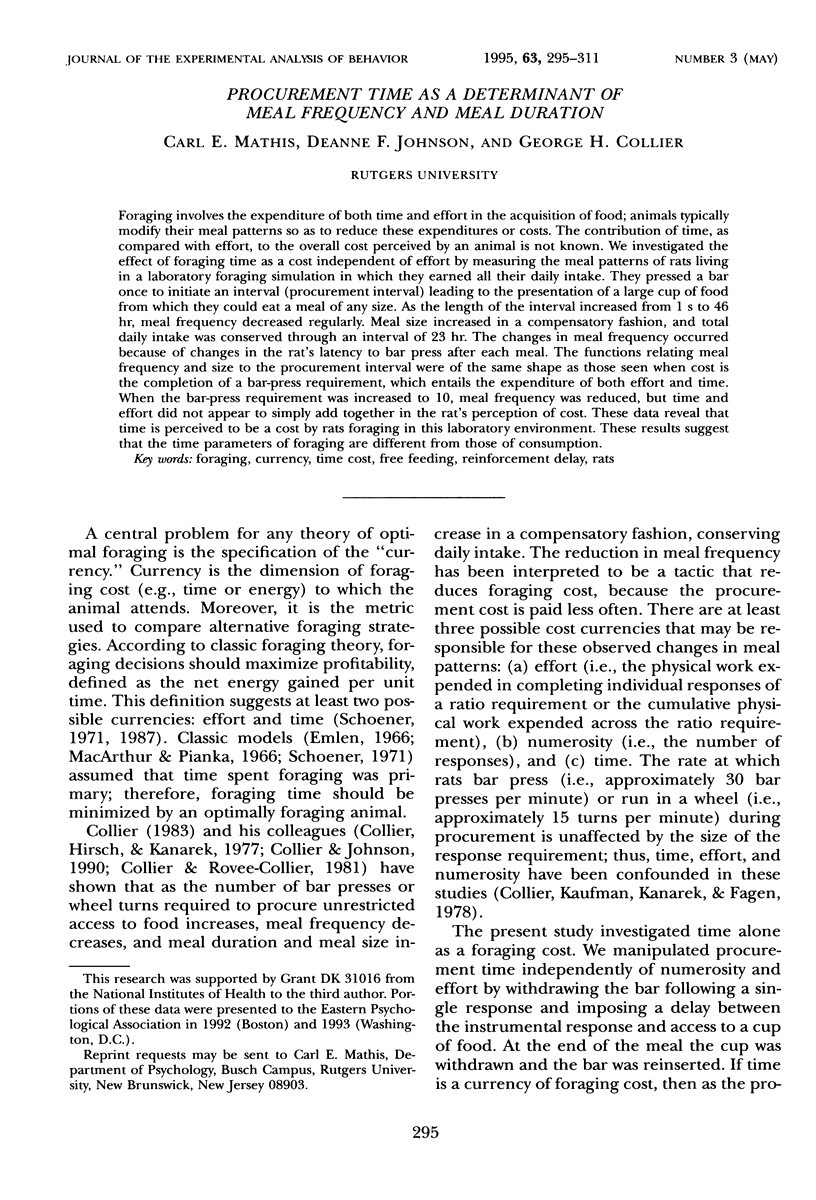
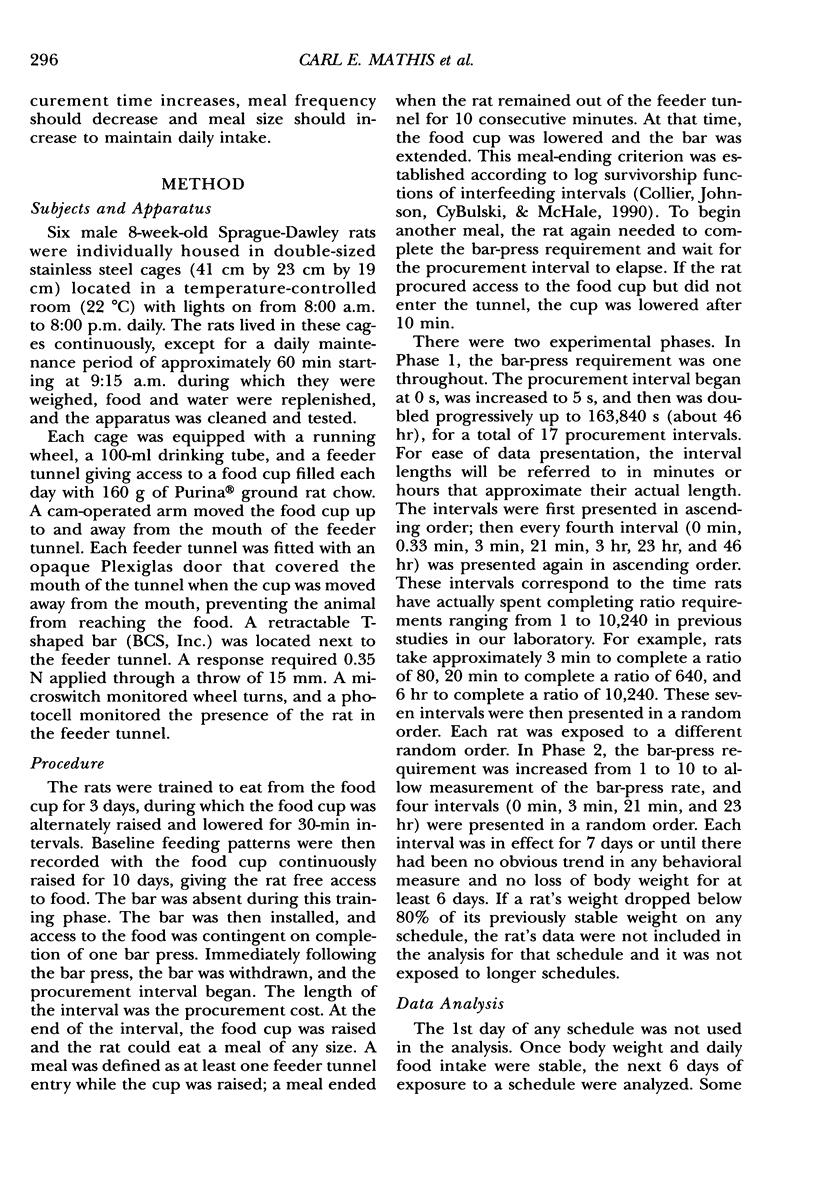
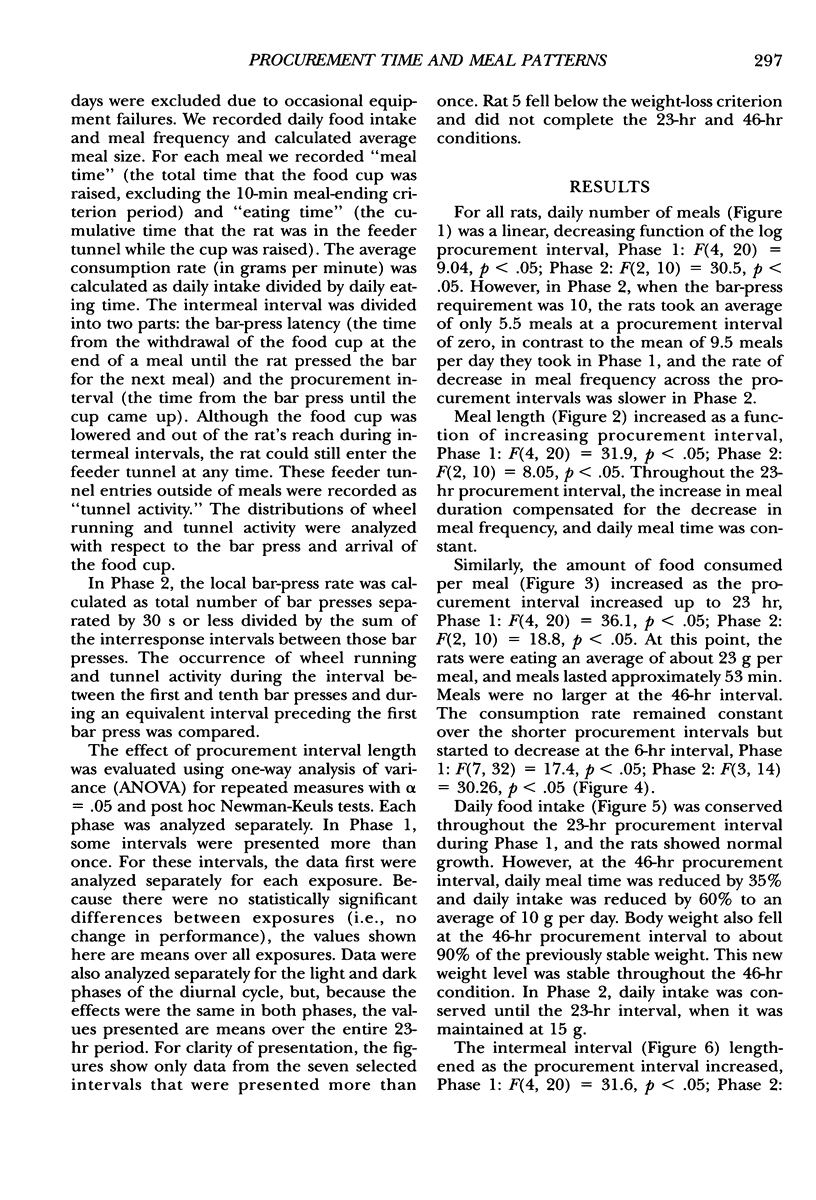
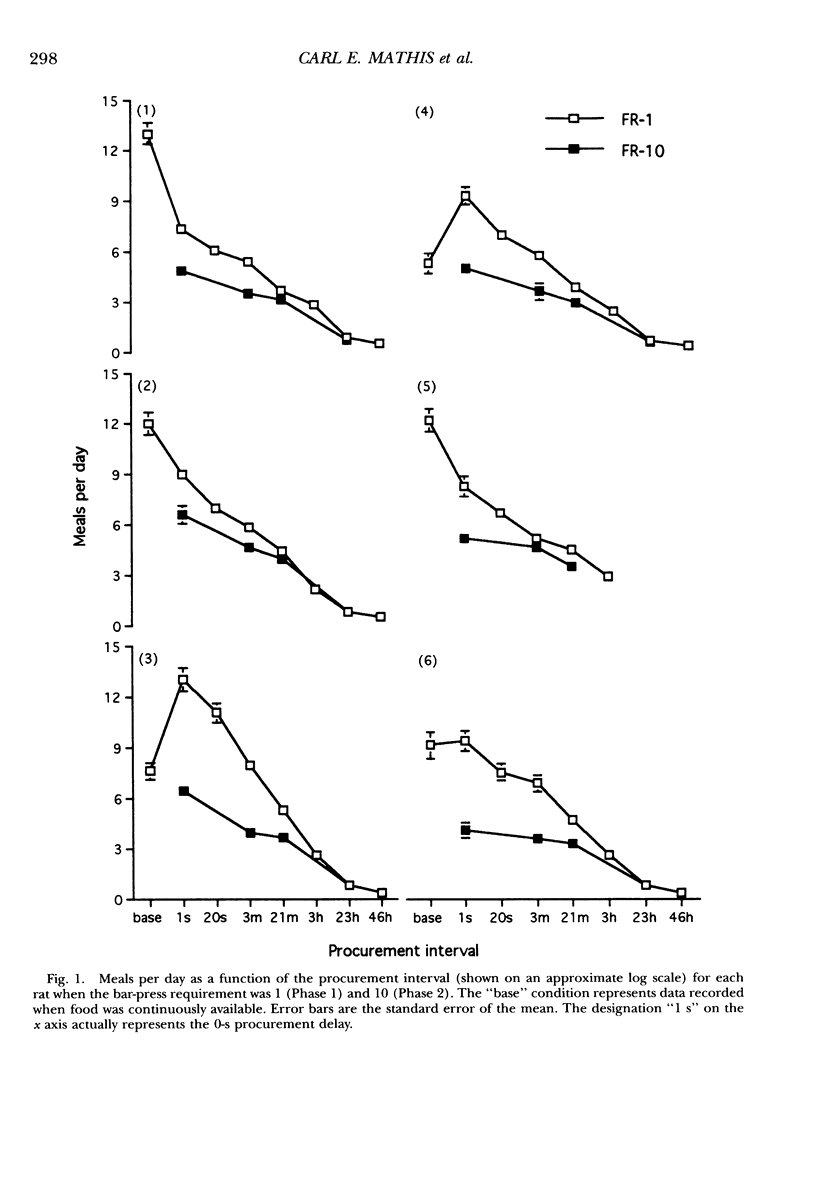
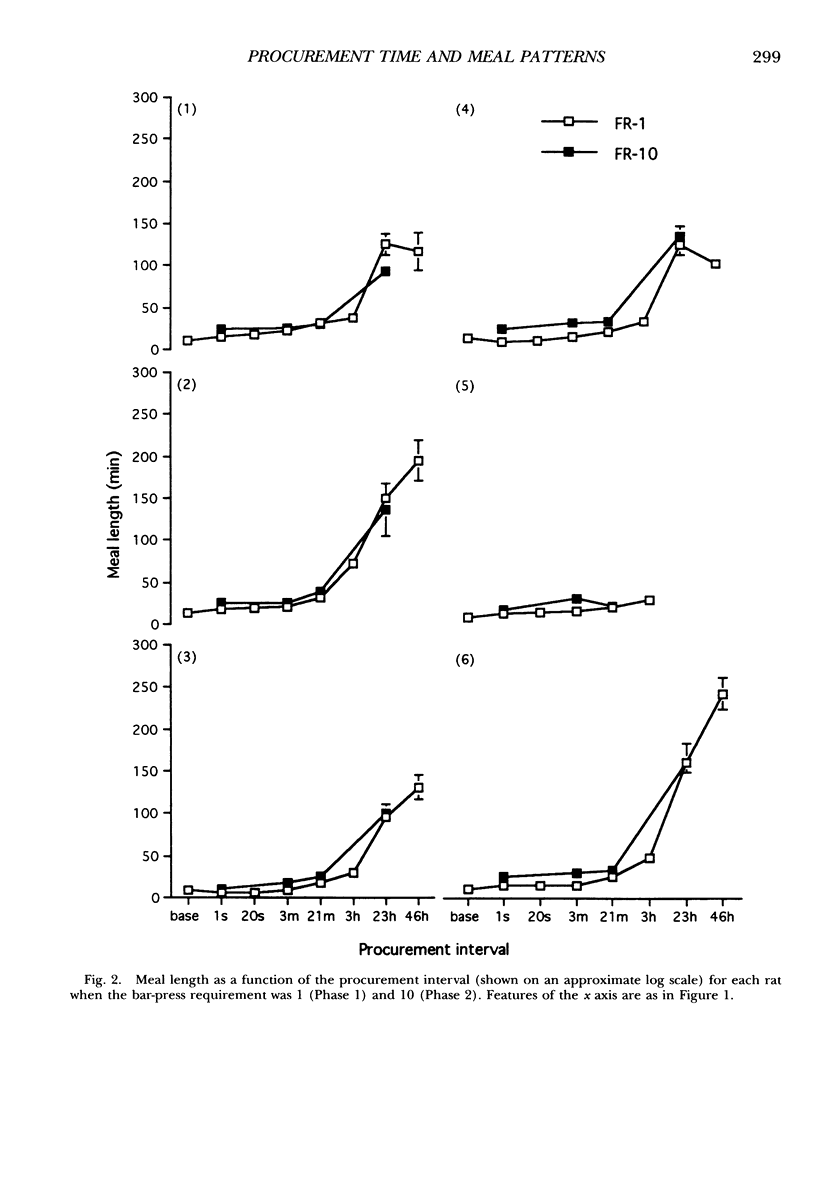
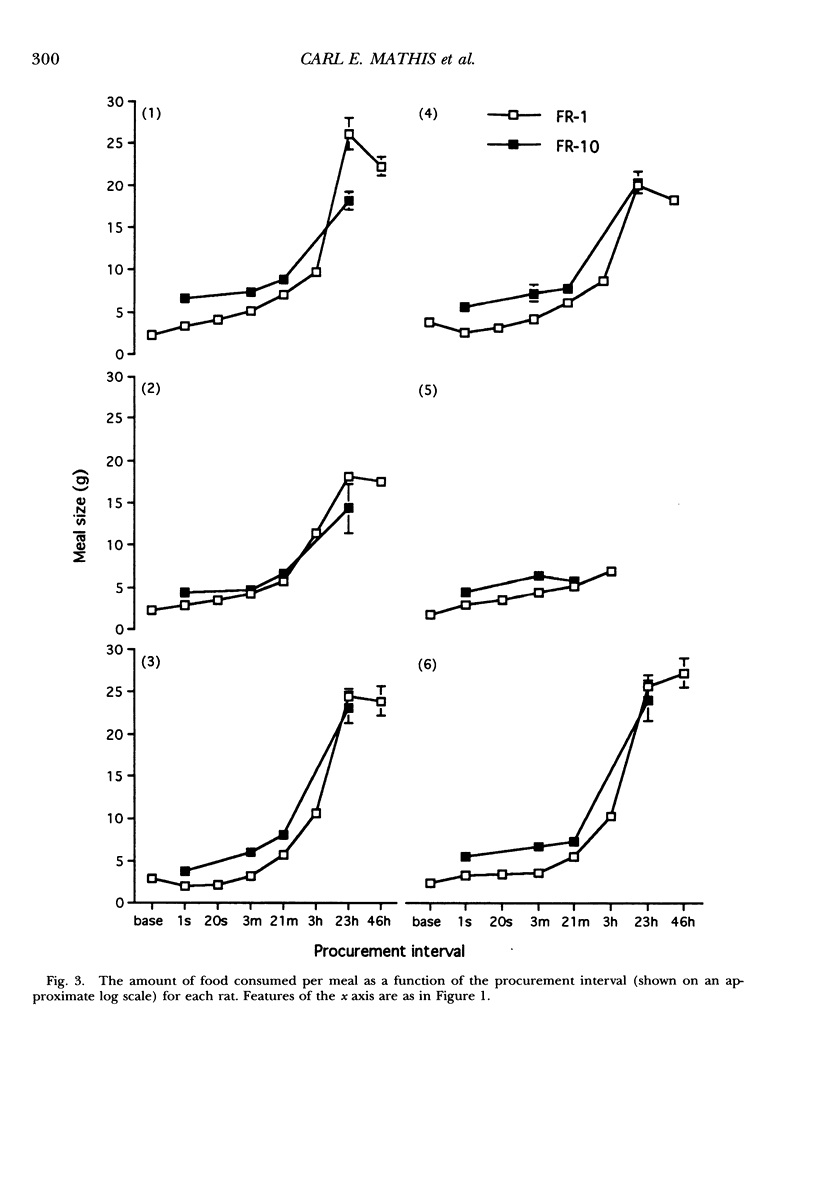
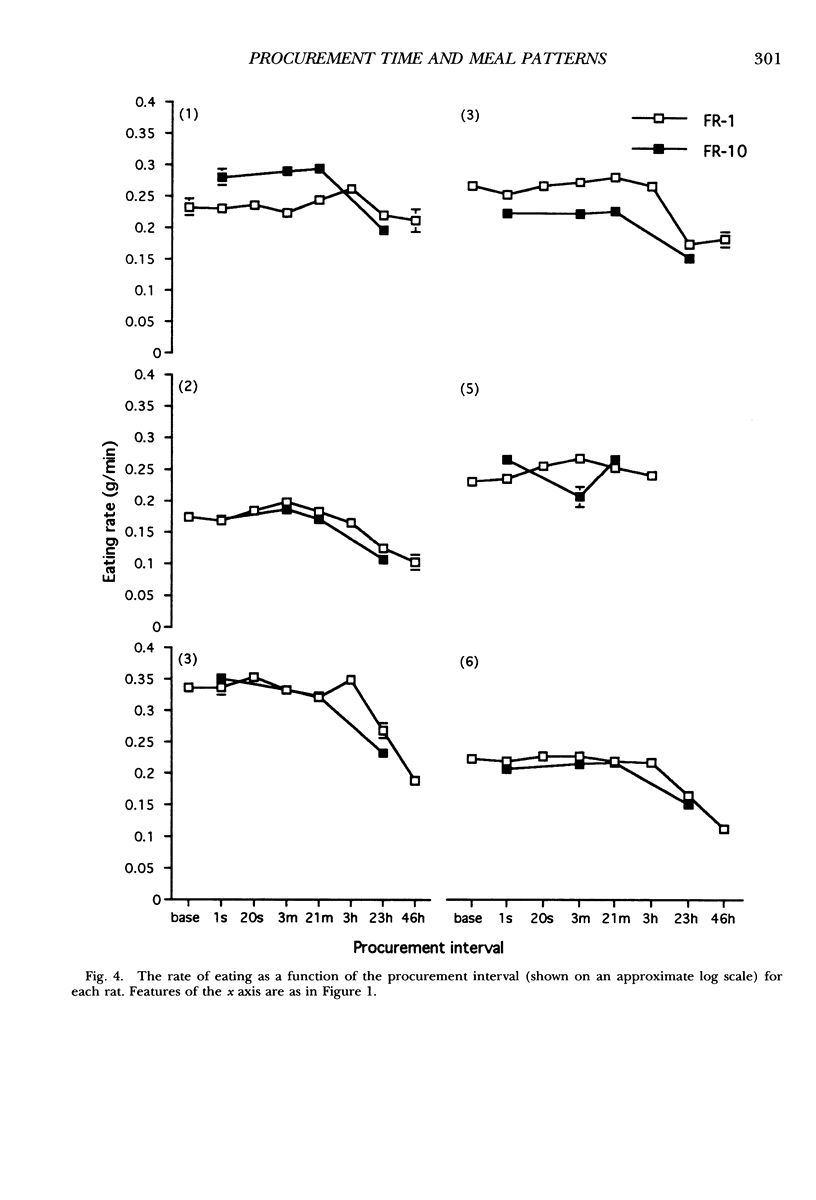
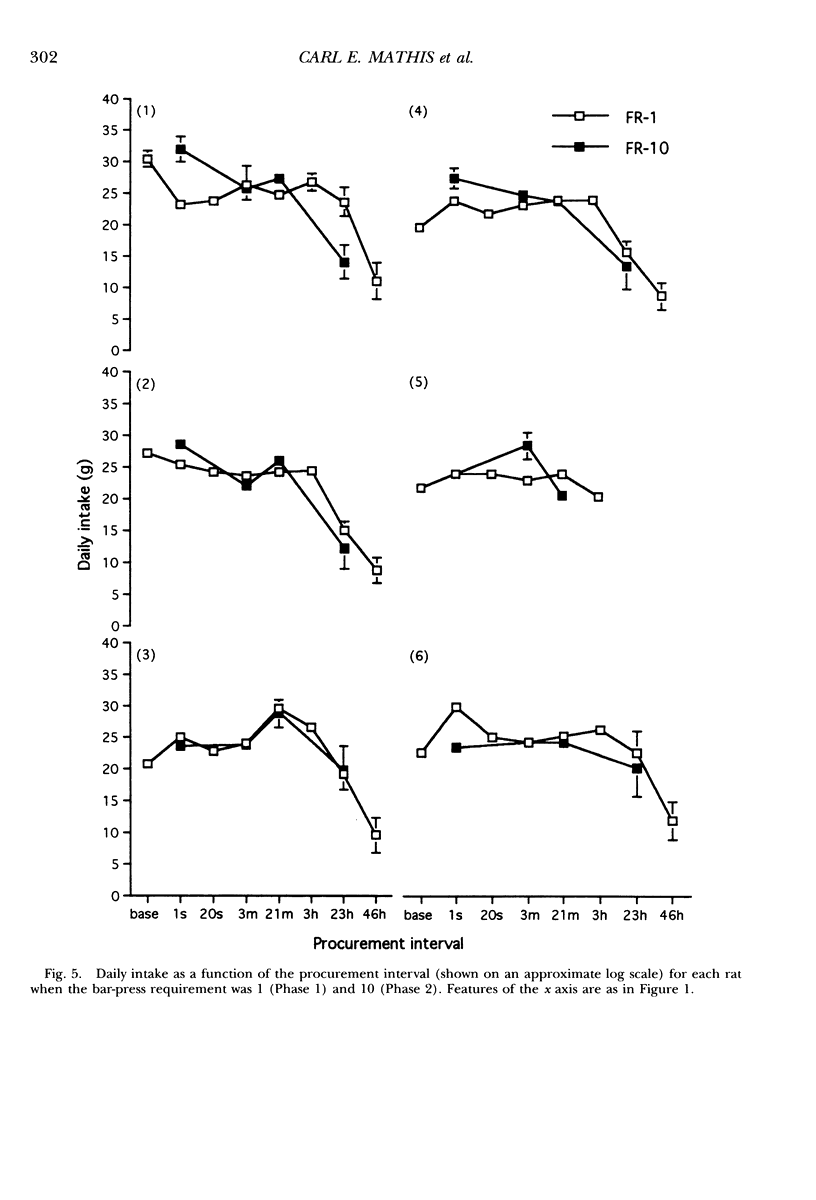
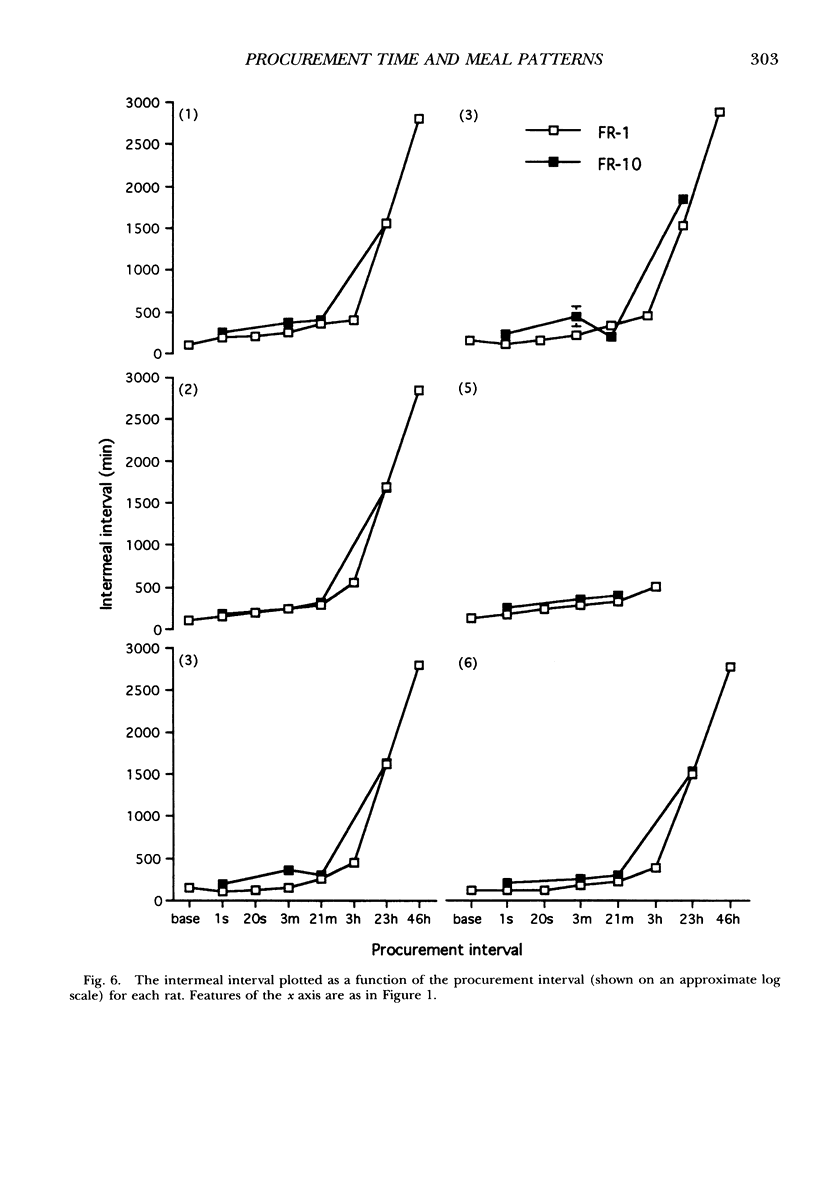
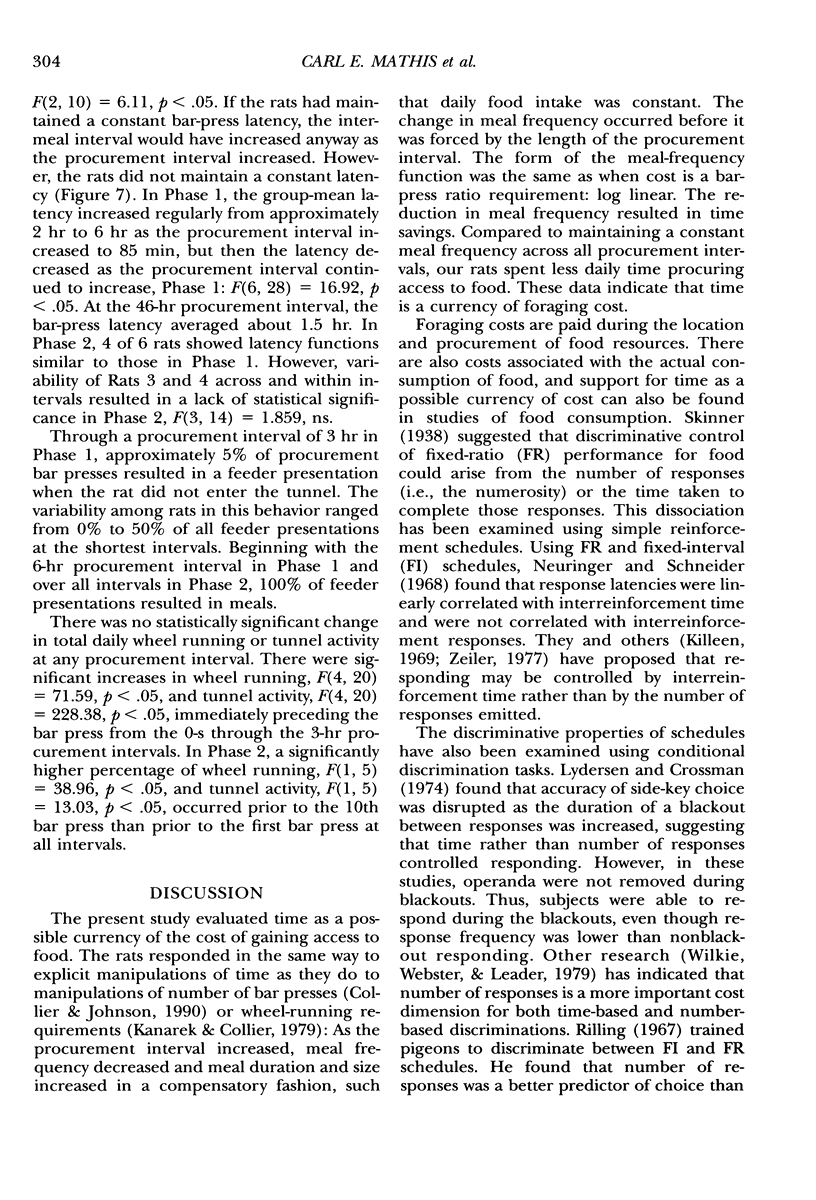
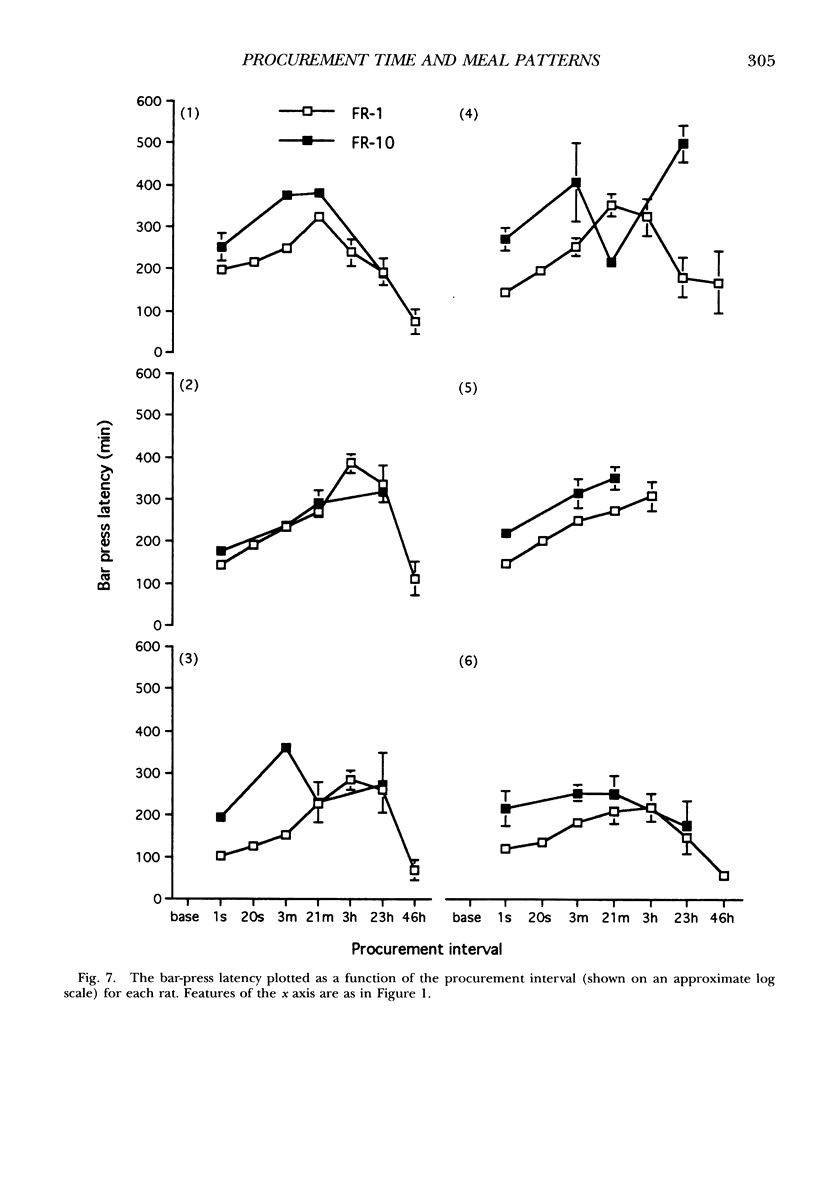
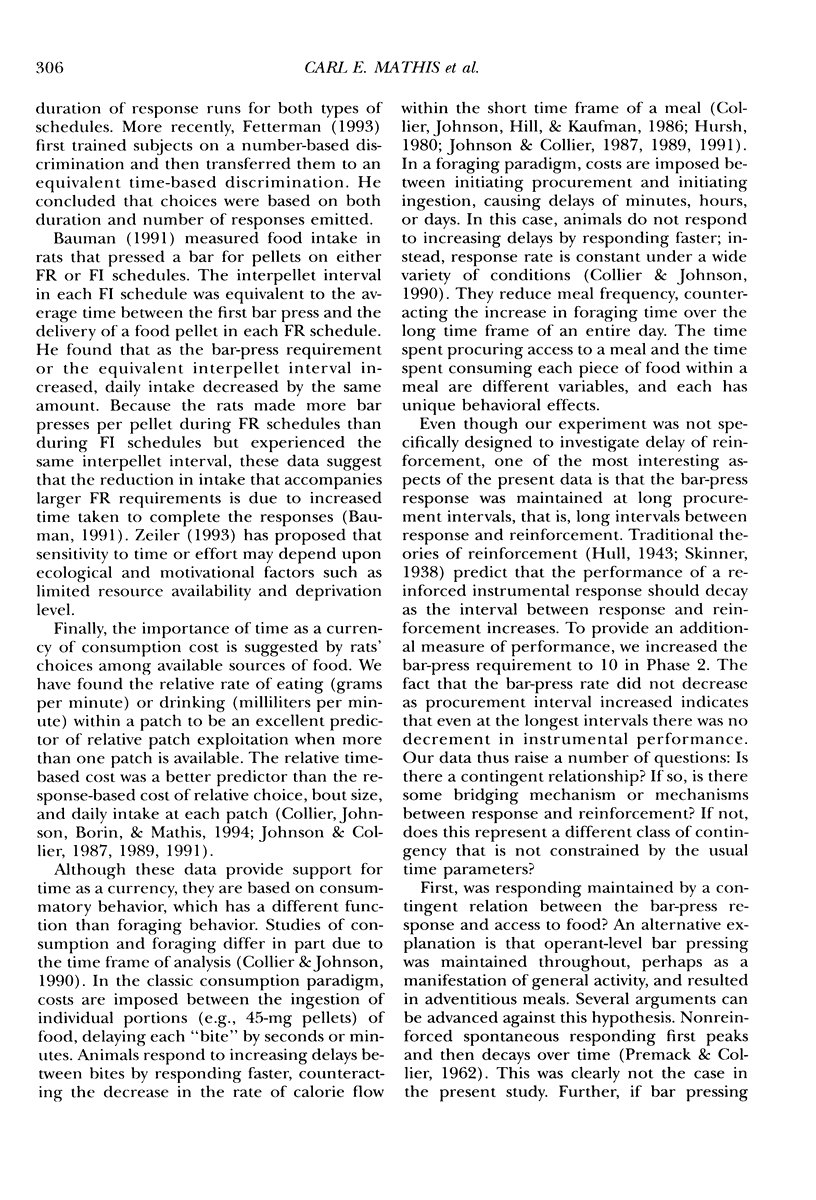
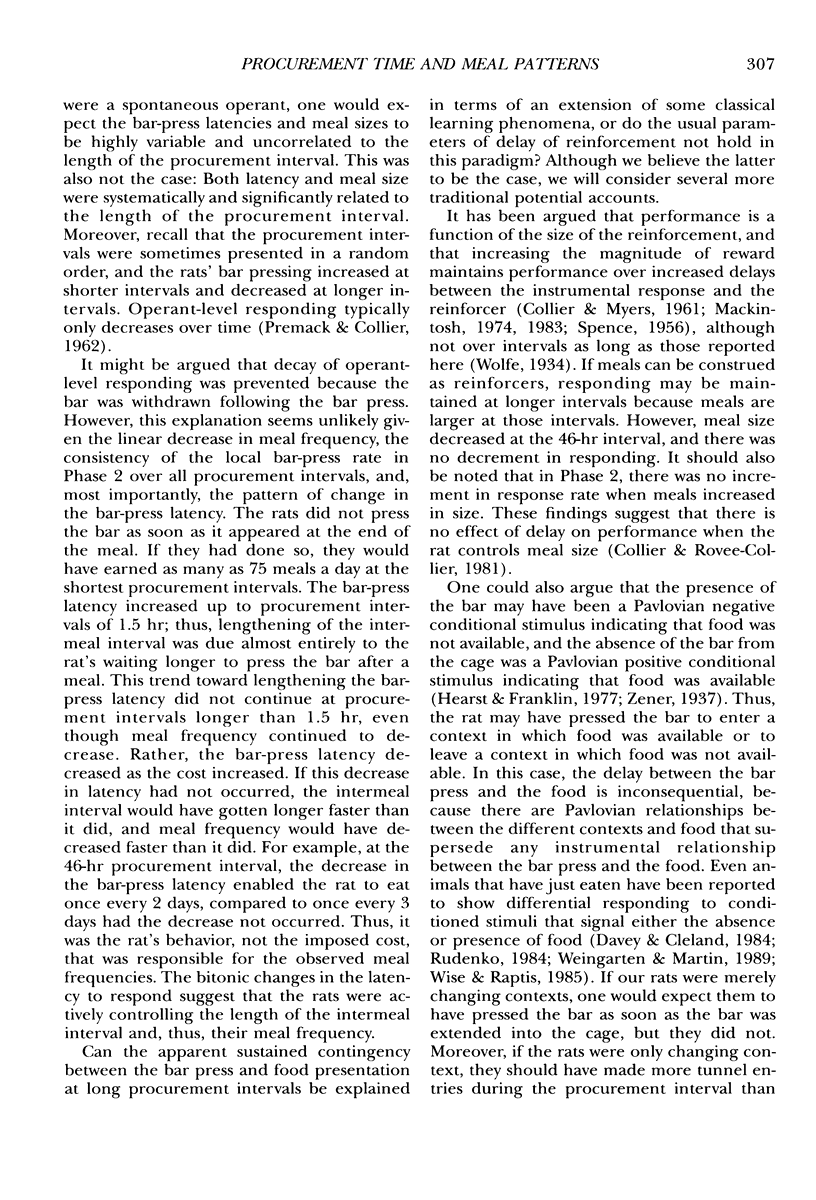
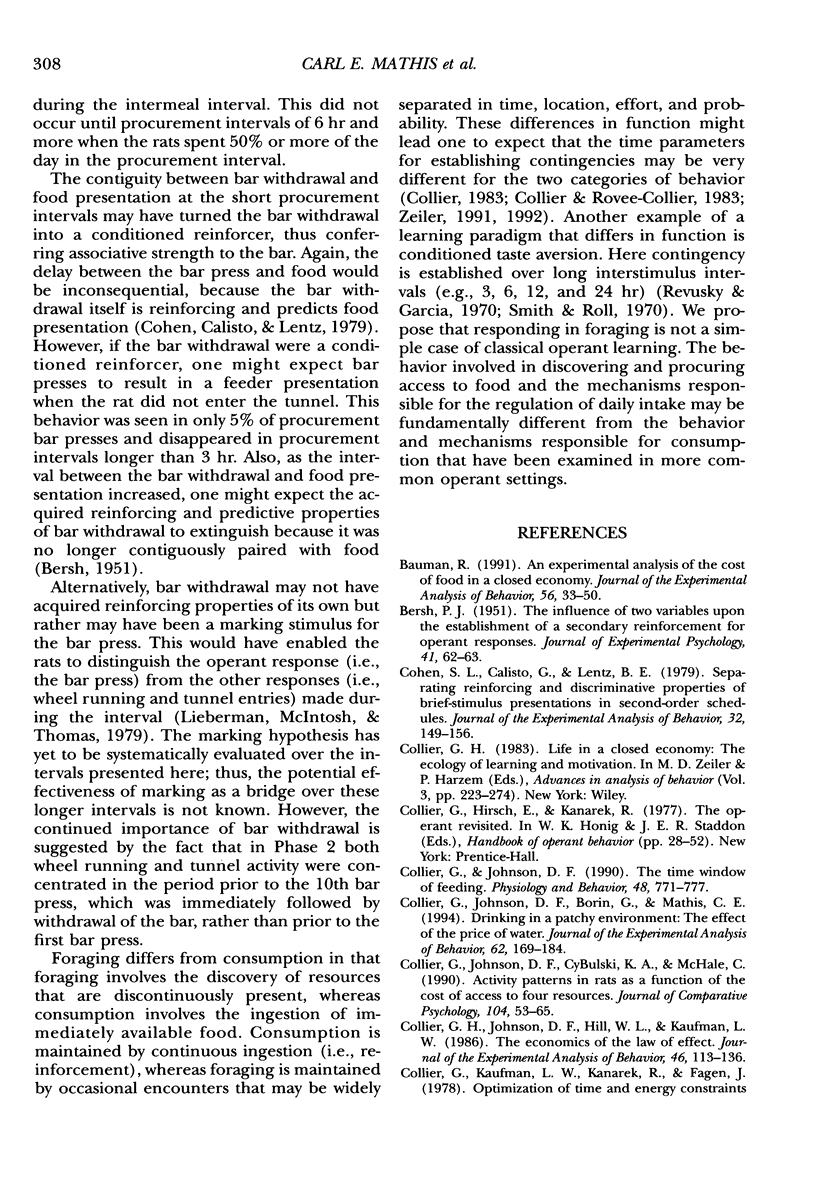
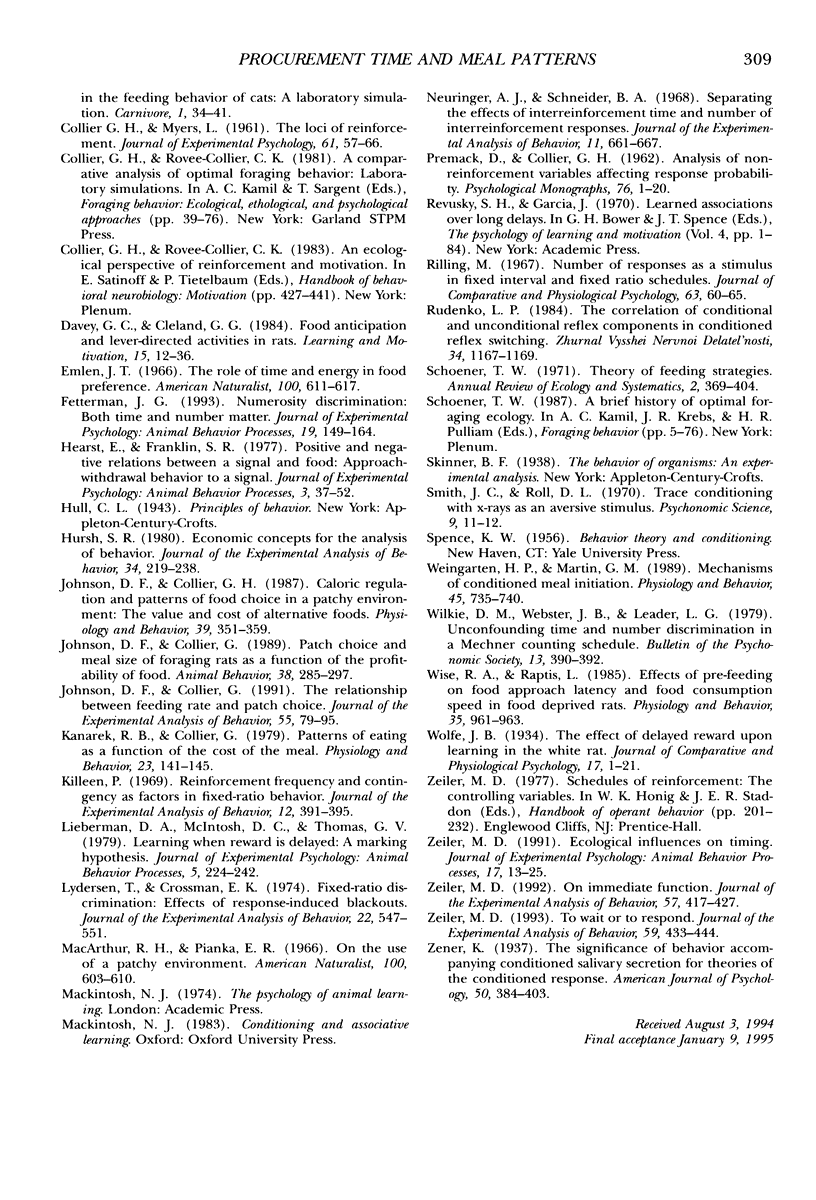
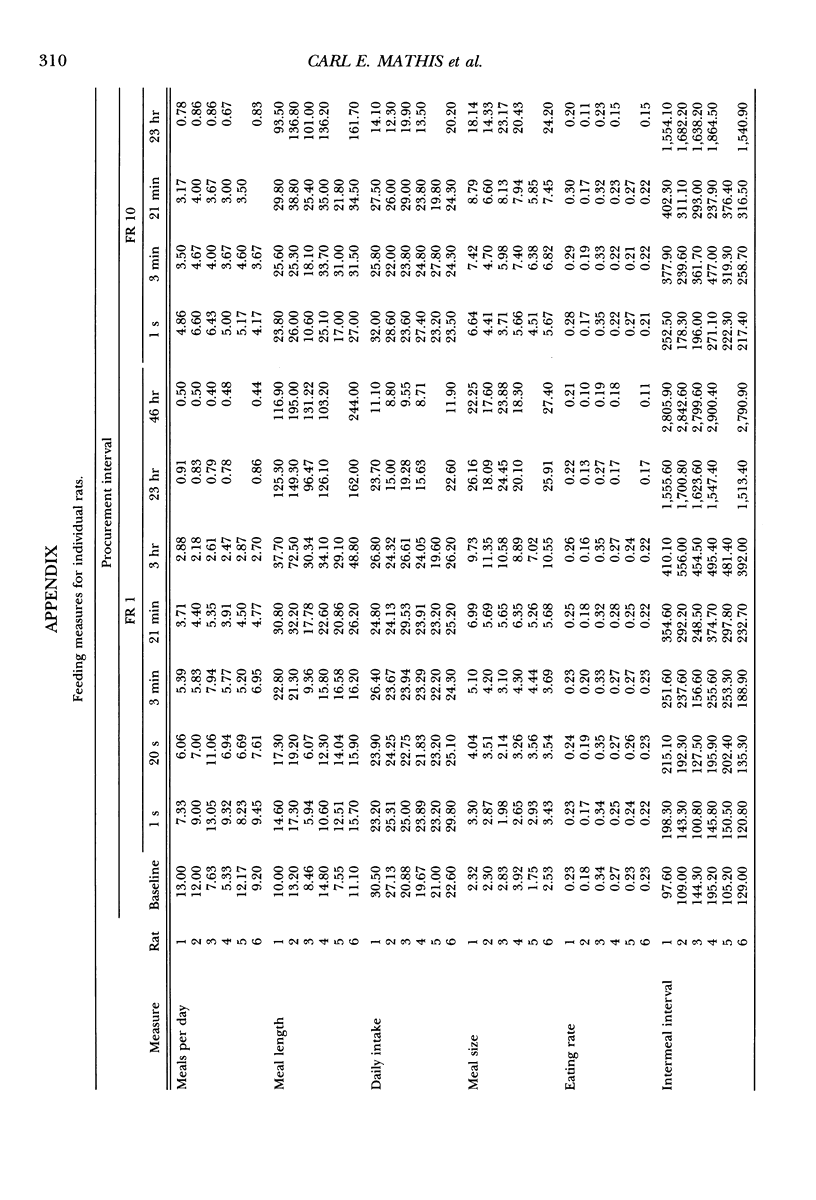
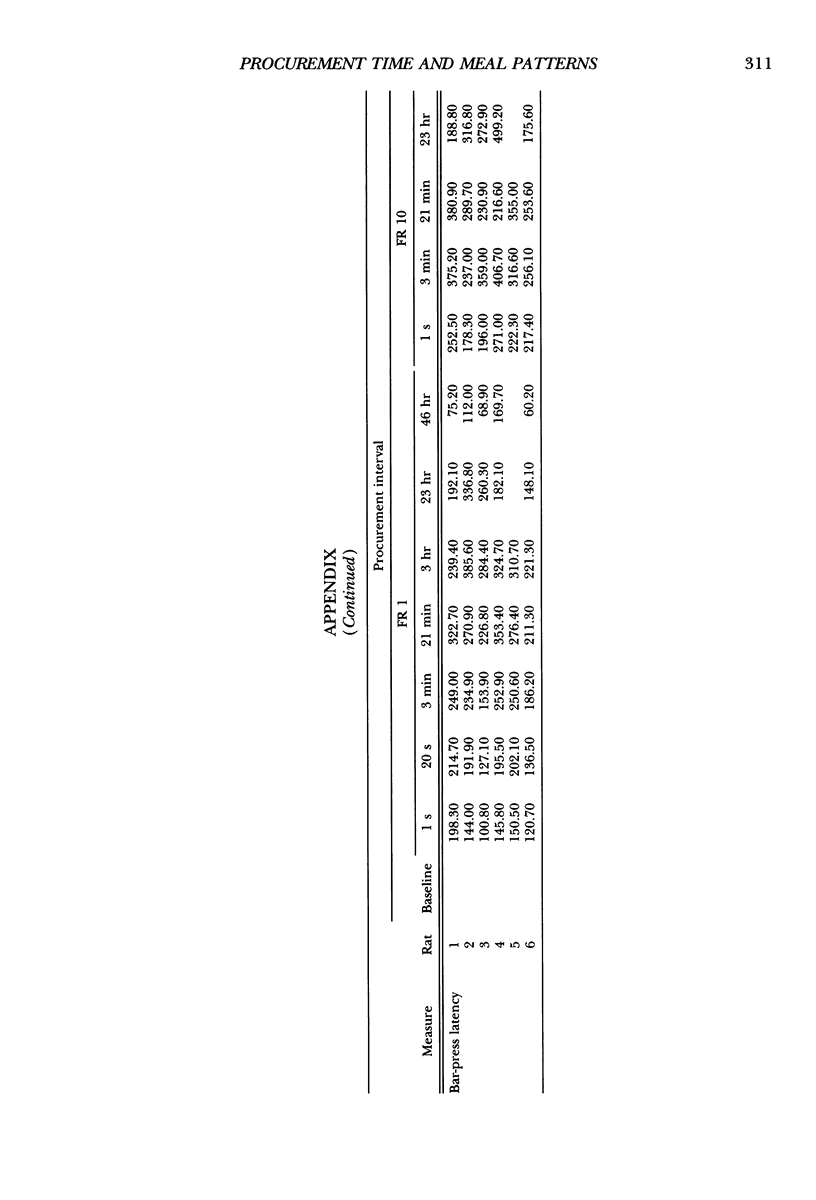
Selected References
These references are in PubMed. This may not be the complete list of references from this article.
- BERSH P. J. The influence of two variables upon the establishment of a secondary reinforcer for operant responses. J Exp Psychol. 1951 Jan;41(1):62–73. doi: 10.1037/h0059386. [DOI] [PubMed] [Google Scholar]
- Bauman R. An experimental analysis of the cost of food in a closed economy. J Exp Anal Behav. 1991 Jul;56(1):33–50. doi: 10.1901/jeab.1991.56-33. [DOI] [PMC free article] [PubMed] [Google Scholar]
- COLLIER G., MYERS L. The loci of reinforcement. J Exp Psychol. 1961 Jan;61:57–66. doi: 10.1037/h0048851. [DOI] [PubMed] [Google Scholar]
- Cohen S. L., Calisto G., Lentz B. E. Separating the reinforcing and discriminative properties of brief-stimulus presentations in second-order schedules. J Exp Anal Behav. 1979 Sep;32(2):149–156. doi: 10.1901/jeab.1979.32-149. [DOI] [PMC free article] [PubMed] [Google Scholar]
- Collier G. H., Johnson D. F., CyBulski K. A., McHale C. A. Activity patterns in rats (Rattus norvegicus) as a function of the cost of access to four resources. J Comp Psychol. 1990 Mar;104(1):53–65. doi: 10.1037/0735-7036.104.1.53. [DOI] [PubMed] [Google Scholar]
- Collier G. H., Johnson D. F., Hill W. L., Kaufman L. W. The economics of the law of effect. J Exp Anal Behav. 1986 Sep;46(2):113–136. doi: 10.1901/jeab.1986.46-113. [DOI] [PMC free article] [PubMed] [Google Scholar]
- Collier G., Johnson D. F., Borin G., Mathis C. E. Drinking in a patchy environment: the effect of the price of water. J Exp Anal Behav. 1994 Sep;62(2):169–184. doi: 10.1901/jeab.1994.62-169. [DOI] [PMC free article] [PubMed] [Google Scholar]
- Collier G., Johnson D. F. The time window of feeding. Physiol Behav. 1990 Dec;48(6):771–777. doi: 10.1016/0031-9384(90)90225-s. [DOI] [PubMed] [Google Scholar]
- Fetterman J. G. Numerosity discrimination: both time and number matter. J Exp Psychol Anim Behav Process. 1993 Apr;19(2):149–164. [PubMed] [Google Scholar]
- Johnson D. F., Collier G. H. Caloric regulation and patterns of food choice in a patchy environment: the value and cost of alternative foods. Physiol Behav. 1987;39(3):351–359. doi: 10.1016/0031-9384(87)90234-4. [DOI] [PubMed] [Google Scholar]
- Johnson D. F., Collier G. The relationship between feeding rate and patch choice. J Exp Anal Behav. 1991 Jan;55(1):79–95. doi: 10.1901/jeab.1991.55-79. [DOI] [PMC free article] [PubMed] [Google Scholar]
- Kanarek R. B., Collier G. Patterns of eating as a function of the cost of the meal. Physiol Behav. 1979 Jul;23(1):141–145. doi: 10.1016/0031-9384(79)90134-3. [DOI] [PubMed] [Google Scholar]
- Killeen P. Reinforcement frequency and contingency as factors in fixed-ratio behavior. J Exp Anal Behav. 1969 May;12(3):391–395. doi: 10.1901/jeab.1969.12-391. [DOI] [PMC free article] [PubMed] [Google Scholar]
- Lieberman D. A., McIntosh D. C., Thomas G. V. Learning when reward is delayed: a marking hypothesis. J Exp Psychol Anim Behav Process. 1979 Jul;5(3):224–242. doi: 10.1037//0097-7403.5.3.224. [DOI] [PubMed] [Google Scholar]
- Lydersen T., Crossman E. K. Fixed-ratio discrimination: effects of response-produced blackouts. J Exp Anal Behav. 1974 Nov;22(3):547–551. doi: 10.1901/jeab.1974.22-547. [DOI] [PMC free article] [PubMed] [Google Scholar]
- Neuringer A. J., Schneider B. A. Separating the effects of interreinforcement time and number of interreinforcement responses. J Exp Anal Behav. 1968 Nov;11(6):661–667. doi: 10.1901/jeab.1968.11-661. [DOI] [PMC free article] [PubMed] [Google Scholar]
- Rilling M. Number of responses as a stimulus in fixed interval and fixed ratio schedules. J Comp Physiol Psychol. 1967 Feb;63(1):60–65. doi: 10.1037/h0024164. [DOI] [PubMed] [Google Scholar]
- Weingarten H. P., Martin G. M. Mechanisms of conditioned meal initiation. Physiol Behav. 1989 Apr;45(4):735–740. doi: 10.1016/0031-9384(89)90287-4. [DOI] [PubMed] [Google Scholar]
- Wise R. A., Raptis L. Effects of pre-feeding on food-approach latency and food consumption speed in food deprived rats. Physiol Behav. 1985 Dec;35(6):961–963. doi: 10.1016/0031-9384(85)90266-5. [DOI] [PubMed] [Google Scholar]
- Zeiler M. D. On immediate function. J Exp Anal Behav. 1992 May;57(3):417–427. doi: 10.1901/jeab.1992.57-417. [DOI] [PMC free article] [PubMed] [Google Scholar]
- Zeiler M. D. To wait or to respond? J Exp Anal Behav. 1993 May;59(3):433–444. doi: 10.1901/jeab.1993.59-433. [DOI] [PMC free article] [PubMed] [Google Scholar]


